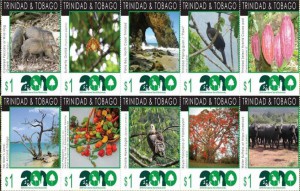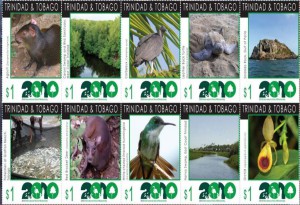Odd things happen when you’re utterly immersed (at least some of the time) in agricultural biodiversity, and so are your friends. You see a harmless enough story on a trade magazine’s website, which says that a century plant — which it specifies is Agave abrupta — at Royal Botanic Gardens Kew is flowering. Kew Director Stephen Hopper is quoted as saying that, being as how this is the International Year of Biodiversity, the “specimen is a great example of the beauty, joy and economic use that we get from the plants we share our planet with.”
Hort Week manages to garble Kew’s Press Release and blog post to tell us all about “the species”.
Native to tropical America, the century plant was introduced to Padua Botanical Garden in Italy – the world’s first botanical garden – in 1561 and is now widely cultivated throughout the world.
The species is now naturalised in the driest parts of southern Europe, and is often used for fencing in Mexico and Central America, as it is impermeable to both cattle and people once established due to its size and needle-sharp spines.
It was introduced to Spain in the 1940s for the production of sisal for rope, but subsided due to the arrival of nylon and synthetic ropes. In addition, the fermented juice of the agave plant is used to make the drink mescal.
So you send a link to a couple of chums who you know are interested in this sort of thing, reject the idea of writing about it on the blog, and think no more about it. Back comes one chum. “Agave abrupta doesn’t ring a bell for me.”
There are, it must be said, a large number of Agaves, maybe “293 recognized species.” Kew would know though, right?
Maybe not. I checked a couple of taxonomy databases, and A. abrupta didn’t ring any bells for them either. One site suggested that it was a synonym of Agave americana ssp. americana var. expansa (Jacobi) Gentry, which fits with the fact that Howard Scott Gentry wrote a famous monograph on Agaves, published in 1982; he presumably reclassified A. abrupta Trel. 1901, but Kew has chosen not to follow Gentry. I suppose that’s their prerogative. As chum 2 observed, “they’re a complex lot, and difficult to keep herbarium specimens”.
On to uses. Kew says it was used as fencing and grown for sisal. Not, then, “mescal”. Nor tequila, which was where my ignorant thoughts went. Ah, but … Chum 1 claims that the meteoric rise in tequila’s popularity has resulted in “some Agave-starved tequila companies … resorting to buying off old henequen plantations in the Yucatan peninsula to use the fiber-producing plants in their distilleries in order to keep the ‘100% Agave’ label (and the associated premium price) on their product.” Henequen is A. fourcroydes, grown for its fibre, which is almost identical to sisal. Presumably that breaks the law about “true” tequila, but as Chum 2 pointed out, the Geographical Indication that protects tequila is neither socioeconomically nor ecologically sustainable.
That said, aside from possibly adulterating tequila, henequen is also used to make its very own licor de henequen. Whether this is a traditional drink, as some claim, or a recent invention in response to henequen’s eclipse by nylon and other synthetic rope fibres, I’m unwilling to say.
All that information flowed from one rather silly article and press release, if you know the right people. Which we do.
Flickr photo of henequen fibre by Just Another Shot, used under a Creative Commons License.
And please note, the astounding Euro-centricity of the claim that Padua was “the world’s first botanic garden” has not passed unnoticed. Maybe another time.

